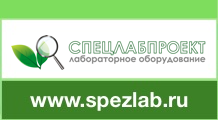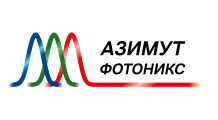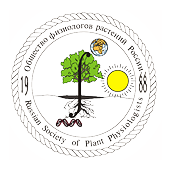Новости науки и практики // Июнь 2020

Functions of Anionic Lipids in Plants
Using the localization of each anionic lipid and its related metabolic enzymes as starting points, Noack and Jallais summarize their roles within the different compartments of the endomembrane system and address their associated developmental and physiological consequences.
https://www.annualreviews.org/doi/full/10.1146/annurev-arplant-081519-035910
Virus protein discovery reveals new plant-animal class of cell division disruptors
Researchers from the Institute of Genetics and Developmental Biology (IGDB) discovered a plant viral protein named 17K that disrupts host cell division to promote its own propagation in infected tissues. They also linked it structurally to certain animal virus proteins.
https://www.eurekalert.org/pub_releases/2020-05/caos-vpd051320.php
Heat stress response in the closest algal relatives of land plants reveals conserved stress signaling circuits
de Vries et al. explored the effect of heat stress in Mougeotia and Spirogyra , two representatives of Zygnematophyceae – the closest known algal sister lineage to land plants. Heat stress induced pronounced phenotypic alterations in their plastids, and high‐performance liquid chromatography‐tandem mass spectroscopy‐based profiling of 565 transitions for the analysis of main central metabolites revealed significant shifts in 43 compounds. They also analyzed the global differential gene expression responses triggered by heat, generating 92.8 Gbp of sequence data and assembling a combined set of 8905 well‐expressed genes. Each organism had its own distinct gene expression profile; less than one‐half of their shared genes showed concordant gene expression trends. They nevertheless detected common signature responses to heat such as elevated transcript levels for molecular chaperones, thylakoid components, and – corroborating our metabolomic data – amino acid metabolism.
https://onlinelibrary.wiley.com/doi/10.1111/tpj.14782#.XsQ1ZFB45XU.twitter
Selaginella was hyperdiverse already in the Cretaceous
"Selaginella is notorious for the small morphological differences seen among many species," say Schmidt et al. but they find that it's not a new trait for the genus.
https://nph.onlinelibrary.wiley.com/doi/full/10.1111/nph.16600
7 Plants You’ll Be Seeing More Of As Model Species
What plants will be shaping botanical research in the future? Here are seven candidates.
https://www.botany.one/2020/05/7-plants-youll-be-seeing-more-of-as-model-species/
To C4 or not to C4 if you’re a tree? Some possible answers
C4 photosynthesis is an efficient way of harnessing energy, yet trees rarely use it. Why is that?
https://www.botany.one/2020/05/to-c4-or-not-to-c4-if-youre-a-tree-some-possible-answers/
New insights on the role of cytokinin in nodule formation
Cytokinins may have a role in controlling both bacterial accommodation and tissue differentiation related to nodule formation.
https://www.botany.one/2020/05/new-insights-on-the-role-of-cytokinin-in-nodule-formation/
Artificial chloroplasts turn sunlight and carbon dioxide into organic compounds
Just like mechanics cobble together old engine parts to build a new roadster, synthetic biologists have remade chloroplasts, the engine at the heart of photosynthesis. By combining the light-harvesting machinery of spinach plants with enzymes from nine different organisms, scientists report making an artificial chloroplast that operates outside of cells to harvest sunlight and use the resulting energy to convert carbon dioxide (CO2) into energy-rich molecules.
Cyber-spinach turns sunlight into sugar
Combination of biological membrane and artificial chemistry could power future synthetic organisms.
https://www.nature.com/articles/d41586-020-01396-4?sf233769920=1
Microscopes and roots: investigating whether cell wall thickenings are phi (Φ) or “C” shaped
Noccaea caerulescens has some tricks that help it cope with heavy metals.
Mutually opposing activity of PIN7 splicing isoforms is required for auxin-mediated tropic responses in Arabidopsis thaliana
Kashkan et al. reveal, in the plant model Arabidopsis thaliana, that the PIN7 gene, which encodes a polarly localized transporter for the phytohormone auxin, produces two evolutionarily conserved transcripts. These isoforms PIN7a and PIN7b, differing in a 4 amino acid motif, are present at nearly equal levels in most cells, except some early developing tissues where the expression of PIN7b is moderately prevalent. Both proteins also transport auxin with similar capacity and directionality. However, only PIN7a but not PIN7b cDNA rescues the phenotypes associated with the pin7 knock-out mutation, consistent with their differences in the subcellular trafficking and dynamics at the plasma membrane.
https://www.biorxiv.org/content/10.1101/2020.05.02.074070v1.full
Цианобактерии Chroococcidiopsis могут извлекать воду прямо из минералов
Недавно выяснилось, что цианобактерии Chroococcidiopsis, живущие внутри гипсовой породы в пустыне Атакама, могут существовать и без жидкой воды. Американские ученые разобрались в том, как им это удается. Оказалось, что цианобактерии добывают воду прямо из кристаллов гипса, превращая его в ангидрид.
Предложена универсальная модель старения одноклеточных организмов
Одноклеточные организмы редко обсуждаются в дискуссиях о природе старения, но именно они несут в себе ключ к разгадке вечного вопроса: универсально ли старение для всех живых существ или это вторично приобретенный признак. Французские ученые построили модель старения одноклеточных, согласно которой каждое их деление асимметрично — даже если внешне обе клетки-потомка одинаковы. Из этой модели следует, что механизмы омоложения есть у любого организма, а бактерия, с точки зрения геронтологии, — многоклеточное существо.
Предложена новая гипотеза происхождения эукариот
Известные испанские микробиологи Пурификасьон Лопес-Гарсия и Давид Морейра предложили новую гипотезу происхождения эукариот, которая называется гипотезой HS-синтрофии и учитывает прошлогоднее открытие живого представителя асгардархей. Согласно этой гипотезе, возникновение эукариот было результатом метаболического симбиоза между тремя партнерами: асгардархеей, дельта-протеобактерией и альфа-протеобактерией. В конце концов асгардархея образовала содержимое ядра, дельта-протеобактерия — основу цитоплазмы, а альфа-протеобактерия — митохондрии.
https://elementy.ru/novosti_nauki/433648/Predlozhena_novaya_gipoteza_proiskhozhdeniya_eukariot
Сценарий происхождения высших растений во многом похож на сценарий происхождения животных
Исследования геномов высших растений и их родственников, относящихся к стрептофитовым водорослям, привели биологов к двум выводам. Во-первых, высшие растения не выходили на сушу, будучи многоклеточными, а изначально формировались прямо на суше. Во-вторых, молекулярные преадаптации к освоению суши формировались у предков высших растений очень постепенно и давно — в этом отношении история происхождения высших растений схожа с историей происхождения многоклеточных животных.
Фотосинтез улучшили на двадцать процентов
Искусственный фотосинтез, собранный в водных микрокаплях, перерабатывает в несколько раз больше углекислого газа, чем растения.
https://www.nkj.ru/news/38756/
Растениям дали свет
Растения табака с грибными генами засветились так, что видно невооружённым глазом.
https://www.nkj.ru/news/38655/
The carnivorous plant lifestyle is gene costly
A publication in the journal Current Biology now sheds light on the secret life of the green carnivores. The scientists have deciphered and analysed the genomes of three carnivorous plant species: Venus flytrap Dionaea muscipula, the globally occurring waterwheel plant Aldrovanda vesiculosa and the spoon-leaved sundew Drosera spatulata.
https://www.eurekalert.org/pub_releases/2020-05/uow-tcp051420.php
Across the cell membrane
Aquaporins and glucose transporters facilitate the movement of substances across biological membranes and are present in all kingdoms of life.Biophysicists used a supercomputer to explore the atomic behavior of these proteins. The research suggests glucose transporters function by using a gate on the extracellular side that opens and closes based on body temperature.
https://www.sciencedaily.com/releases/2020/06/200601144828.htm
Nanosensor allows unprecedented access to explore mechanisms related to drought
Plant biologists have developed a new nanosensor that monitors foundational mechanisms related to stress and drought. The new biosensor allows researchers to analyze changes in real time as they happen involving kinases, enzymes that catalyze key biological activities in proteins.
https://www.sciencedaily.com/releases/2020/06/200601152147.htm
The mystery element: building a variable plant cuticle
Cutan must play a role in plant cuticles, but it's not clear how much cutan a cuticle contains.
https://www.botany.one/2020/05/the-mystery-element-building-a-variable-plant-cuticle/
Bloody plants! How soybean uses haemoglobins to obtain nitrogen
Excess nitrogen significantly accelerated nodule senescence and the production of green leghaemoglobin in nodules.
https://www.botany.one/2020/05/bloody-plants-how-soybean-uses-haemoglobins-to-obtain-nitrogen/
How plants forget
New work uncovers how a specific epigenetic mark is reset in sperm.
https://www.eurekalert.org/pub_releases/2020-05/gmio-hpf051320.php
Exchange of arms between chromosomes using molecular scissors
CRISPR/Cas revolutionizes crop cultivation by specific combination of properties
The CRISPR/Cas molecular scissors work like a fine surgical instrument and can be used to modify genetic information in plants. Research teams have now not only exchanged single genes, but recombined entire chromosomes with the CRISPR/Cas technology. In this way, desired properties can be combined in crops.
https://www.sciencedaily.com/releases/2020/05/200527164331.htm
Plants pass on 'memory' of stress to some progeny, making them more resilient
By manipulating the expression of one gene, geneticists can induce a form of 'stress memory' in plants that is inherited by some progeny, giving them the potential for more vigorous, hardy and productive growth, according to researchers, who suggest the discovery has significant implications for plant breeding.
https://www.sciencedaily.com/releases/2020/05/200505121703.htm
Guttation: Fundamentals and Applications: Fundamentals and Applications
The phenomenon of guttation finds applications in a wide range of areas, including plant biology, ecology, agriculture, horticulture, animal husbandry, pharmacology and medicine. This unique text provides a comprehensive review of this process.
Salicylic Acid Biosynthesis in Plants
Salicylic acid (SA) is an important plant hormone that is best known for mediating host responses upon pathogen infection. Its role in plant defense activation is well established, but its biosynthesis in plants is not fully understood.
Новости
Новости науки и практики // Апрель 2024
Обзор научных новостей, опубликованных во всемирной паутине за последний месяцФосфорилирование плазматической мембраны H+-АТФазы Thr881 (треонин) участвует в светоиндуцированном открывании устьиц
Ученые из Университета Нагои (Nagoya University) и Института трансформирующих биомолекул (WPI-ITbM) обнаружили новый ...Научная конференция «Photosynthesis and Hydrogen Energy Research for Sustainability – 2024»
Приглашаем Вас принять участие в XII международной научной конференции


Объявления
Записей не найдено.



